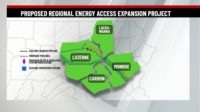On June 15, laborers' and structural trades' union locals in New York City also agreed to a 20% wage cut for work on a 1,240-unit residential project in Manhattan that will include 500 units set aside for affordable housing.
Donald A. Capoccia, managing principal of developer BFC Partners, told the June 9 Manhattan labor panel that “it was more economical” to use union labor for a 350-unit residential-commercial project in Brooklyn, completed in 2007. “But the price differential now is impossible to swallow on affordable housing,” he said.
William Cote, president of residential contractor Hudson Meridian, which works in both union and non-union environments, says some projects employ both types of workers, depending on complexity. However, he says a 25% price differential is no longer “easy to be absorbed in development costs.” He says non-union worker skills and subcontractor quality both are improving, but Capoccia insists that “union trades can be competitive.”
Double-Digit Fringe Hike
Health-care costs and pension-fund issues loom large over negotiations nationwide. Many unions face a double-digit rise in health-care costs annually at a time of historically low settlement package increases. As a result, Mark Erlich, executive secretary-treasurer of the New England Regional Council of Carpenters, says this year's bargaining is focused on keeping up with health-care costs. Virtually all increases achieved “are going to fund our health programs to maintain the level of benefits,” he says, noting the 10% to 20% annual cost hikes expected by unions in his six-state territory.
In Rhode Island, health-care cost premiums increased by 18.6%, says David Rampone, chairman of the Labor Relations Division at AGC of Rhode Island. Union carpenters settled at $3 over two years, to cover health and fringe costs. But he notes that most are happy just to find work these days. “Unemployment in Rhode Island among all trades is around 40%,” Rampone says. “For years, I stopped down at union halls, and there was hardly ever anyone there. Now, there are 30 or 40 guys there, hoping someone will make a last-minute call.”
Despite unemployment running dangerously high across New England, there has been union pushback over cuts. In Connecticut, the carpenters went on strike for a week in April when contractors pressured unions to share some of the higher benefit costs, says Don Shubert, Connecticut Construction Industries Association (CCIA) president. Workers were able to hold their ground, but the three-year, $3.95 settlement will likely be eaten up by health and fringe costs, he says.
“The increases in the benefits are bigger than the market can bear, and that is putting pressure on negotiations,” he says. “Unions are trying to square the needs of their benefit funds with what the contractors can afford in a very competitive market. It's hard to reconcile.”
Randy DeFrehn, executive director of the National Coordinating Committee for Multiemployer Plans, says many insurers are pushing atypically high rate hikes in advance of federal health-care changes, expected by 2014. “[The health- care bill] is coming at everyone like a freight train,” he says. “No one wants to bargain past 2014 so they can evaluate what's going on.”
Health care was the core concern during spring negotiations involving the cement masons in Cleveland, says Rusty Maglionico, Local 404 business manager. The union settled with a two-year agreement that has a $1 increase for the first year and a 60¢ hike for the second. None of that increase will go toward wages.
“Basically, we're doing everything we can to preserve our health care,” he says, noting that vision and dental care plans were dropped. “[During the recession]we've cut our benefits to the bare minimum. Our deductibles have doubled in the last two years. There's no more room for us to move on health care. There's nothing left to give.”
Short-Term Contracts
Although most unions now are negotiating one-year contracts, in Chicago, basic trades continue to negotiate three-year contracts, albeit with provisions intended to address poor business conditions in the region, according to Carol A. Ward, executive director of the Mid-America Regional Bargaining Association, a Des Plaines, Ill.-based enterprise representing union contractors in Chicago and its surrounding suburbs.
“Both parties look for the stability inherent in a three-year contract,” says Ward, noting that, in the majority of cases, wage increases for the first two years are being allocated to pension and health-and-welfare funds. “With work hours down and in view of the current economic climate, both parties agree those funds need to be taken care of,” Ward says.
Several trades, including the Chicago Regional Council of Carpenters-Commercial, have implemented work-rule changes in order to boost their competitiveness and productivity. “Many trades are increasing their hours with the intent of competing more effectively in the current economic climate,” says Ward.
In St. Louis, the 1,000-member bricklayers' union has been on strike since June 1 after talks broke down with the Mason Contractors Association. Both sides have declined comment on the scope or status of negotiations. During the last round of bargaining in 2006, a work stoppage lasted for only a week, according to published reports in the area.
While Arizona has not been seen as a strong union state since the 1970s, a key collective bargaining pact is in the works between the Associated General Contractors' Arizona chapter, representing 12 of the state's largest union firms, and building trades working in the heavy-highway sector.
“We are doing our best to discuss with both the laborers and operating engineers the seriousness of the current wage structure and the fact that union contractors are having a difficult time competing with non-union contractors,” says David Martin, chapter president. “We are working toward a fair wage, understanding the sensitivity that a higher wage structure has on competing.”





Post a comment to this article
Report Abusive Comment